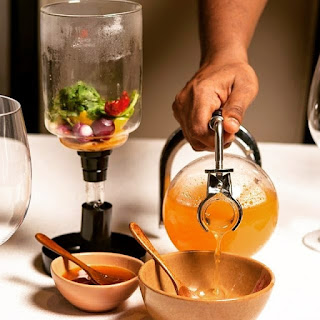Coulibiac - the bully from Russia
Flaky pastry had been always my go to component when I had to impress delegates at a gala table of dinner, Wellington sure has its own storyline , I do tweak or rather use the word "enrich" cleverly to camofoulage the disadvantages of procuring ingredients which make it authentic, Yet the substitutes do give the recipes a different dimension, all these recipes are tried only after I relished the original methods and authentic ingredients; yet at times the luck meter runs ragid and dishes out some unique ones much to the case of my latest trial and error counter part the Coulibiac .
First the name -Coulibiac? I think it is Russian in origin, yet the name sounds French.
Occasionally we take our information wherever we can get it. Crusing the scandanivian region the menus for the cold Barbecue nights featured this divinity; and much of the practical information was sourced from there with some clues of finding its roots .
Three of the self-answering clues were as follows:
•The French pie coulibiac uses vesiga, made from the spinal marrow of what animal?
•Name the hot Russian fish pie that uses vesiga as a key ingredient?
•What is the name for spinal marrow of the sturgeon, a key ingredient of the Russian hot fish pie koulibiaca, or its French analog coulibiac?
That helps a lot already, doesn't it? Tells us it's a Russian hot fish "pie," that includes the spinal marrow of the sturgeon, and that the French borrowed it at some point (early enough that Monsieur Escoffier includes it in his 1903 "bible"). It is more commonly from Russian as Kulebiaka or Kulebyaka.
How and where the first Russian kulebiaka was made, we do not know, but it reached its heyday in the decades leading up to the Russian Revolution on country estates with private chefs and in big-city taverns. It may have had a variety of fillings, although one source says to refer to a "fish kulebiaka" is all but redundant. The more traditional fish were pike, perch, turbot, starlet, salmon, sturgeon, whitefish, sandwiched between layers of other fish, grains, and or other ingredients, including egg, mushrooms, and cabbage. The rice, buckwheat groats, or other grains, or even crèpes, were included to absorb some of the moisture and keep the crust from becoming soggy. Vent holes in the crust served the same purpose; I am already thinking of chugging in cubes of Fois gras to enrich my rich Russian friend.
A classic kulebiaka often had multiple fillings that complemented each other. A common one would have a mixture of some white fish and rice for bottom and top layers with salmon or sturgeon fillets in between.
We have looked at several French coulibiac recipes and the dish is as much about salmon as it is about sturgeon marrow. And rather than what we think of as a pie, it is generally a loaf sealed in brioche dough or puff pastry. It invariably includes hard-boiled eggs, onion, sometimes mushrooms, and a top and bottom layer of cooked farina, semolina, or rice. It may or may not have dill, parsley, or other herbs. Very interestingly (and something that would be banned in this day and age), it is filled through the vent holes with as much as a quarter-pound of melted butter after it comes out of the oven.
You may find recipes for it called Salmon Loaf in Brioche, Salmon in Flaky Pastry, etc. – often these are modified or simplified versions. The simpler versions rely on salmon, leave out the sturgeon, and use rice in place of more unusual grains.
If you thought it was hard (or at least expensive) getting sturgeon roe (caviar), tracking down the marrow is nigh to impossible. And vesiga comes from the European/Asian sturgeon, not the North American fish. Even the all-knowing seafood people called Caspian caviar who gets my roes from time and again ; do not have any suggestions for how you might find vesiga in this country.
Needless to say, coulibiac is not a currently a very popular dish, but in the spirit of full disclosure, we provide a recipe for the cross-culturally named Russian Coulibiac of Salmon, that you can at least read, if not follow to the letter. Just leave out the sturgeon marrow or substitute a modest amount of a white fish in my case I just did it with a local catch of Mahi Mahi which turned out quite flaky and to moisten it the age old French classic sauce Maltase.




Comments
Post a Comment